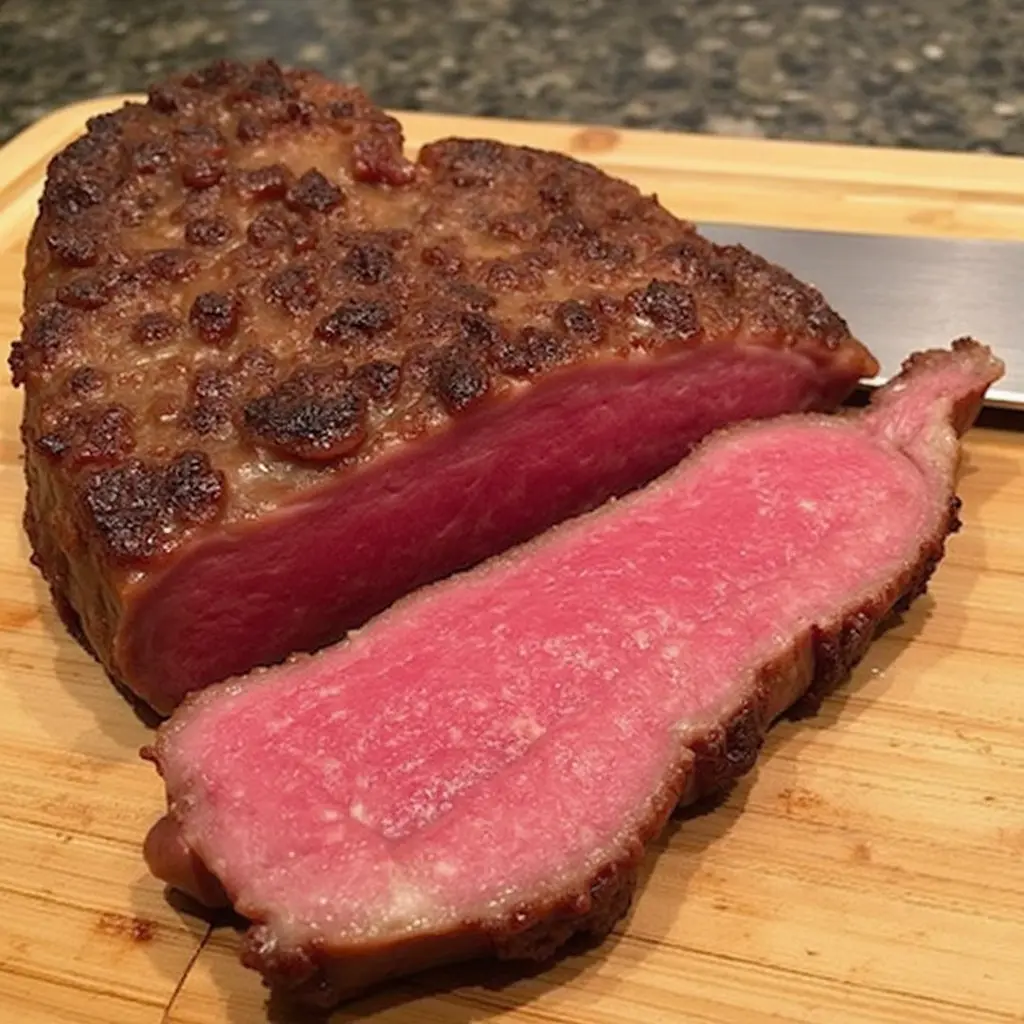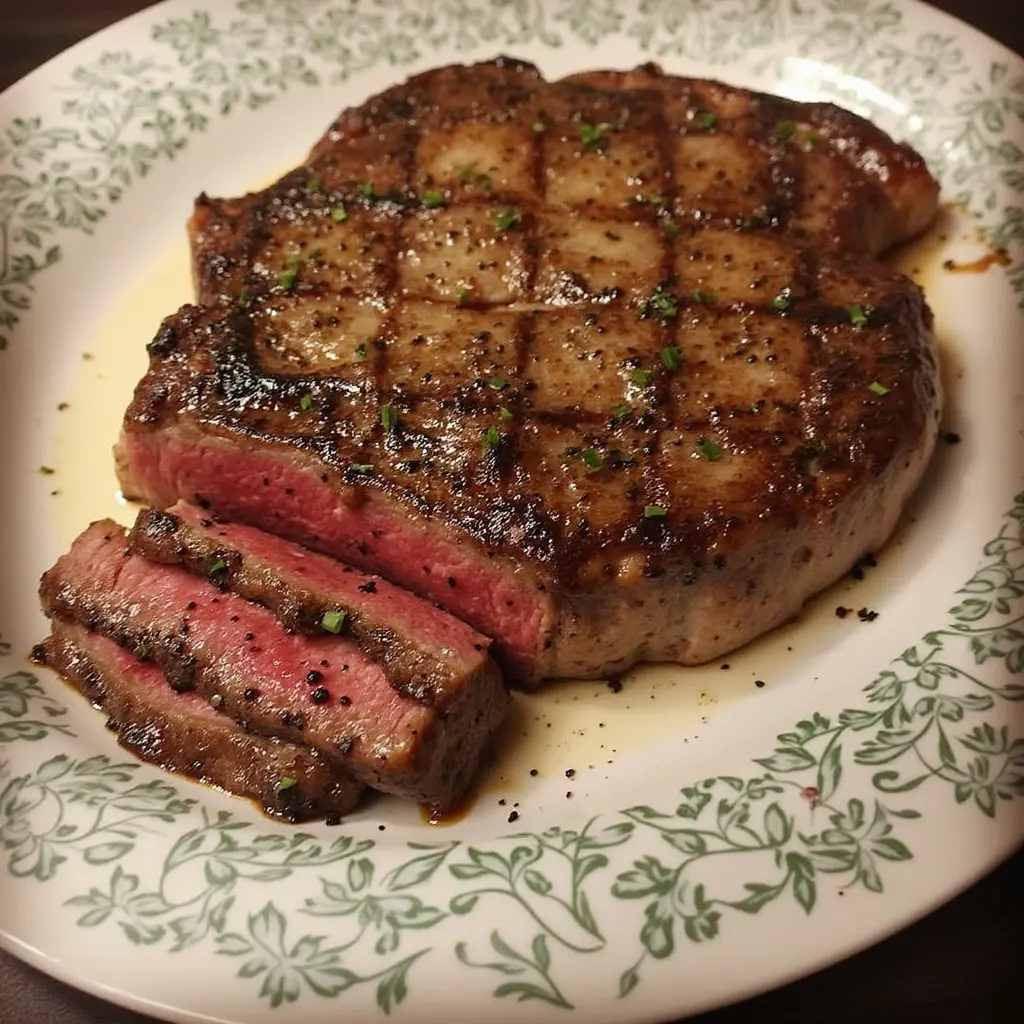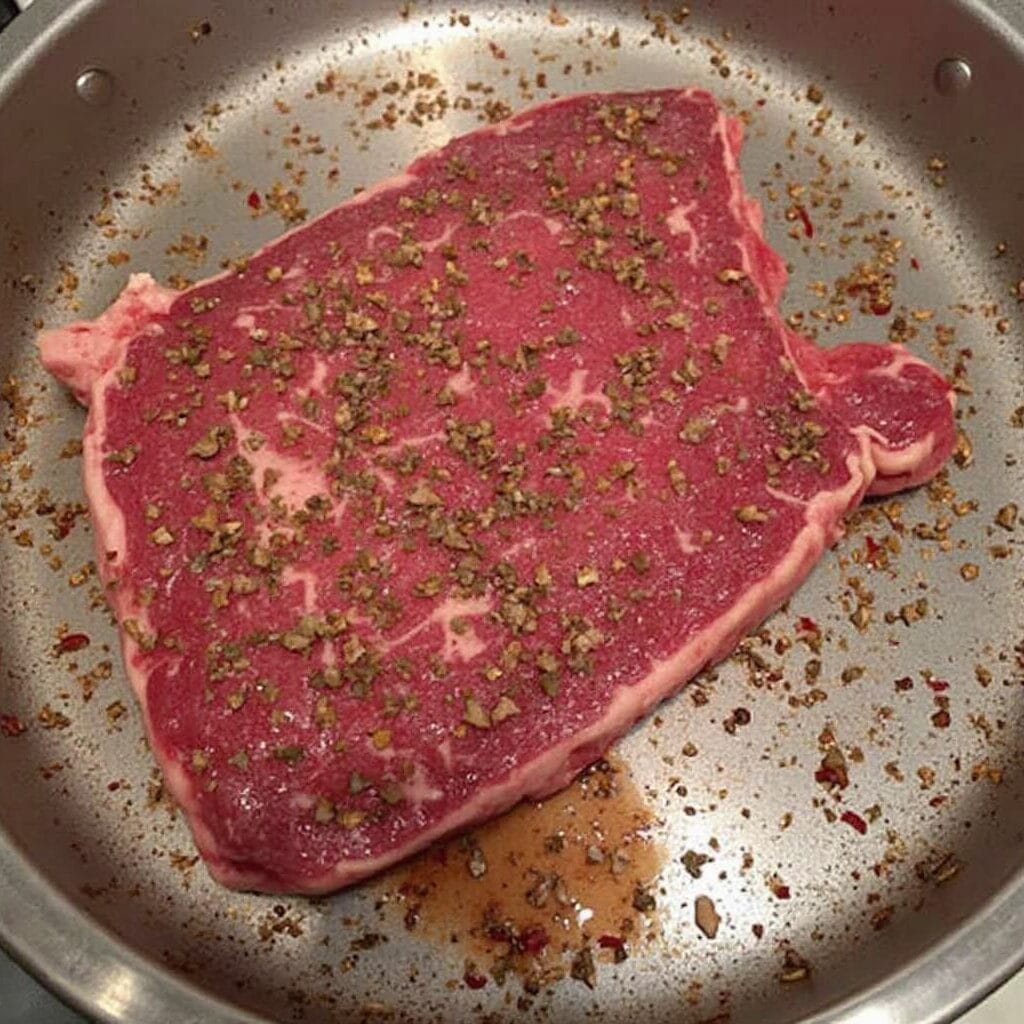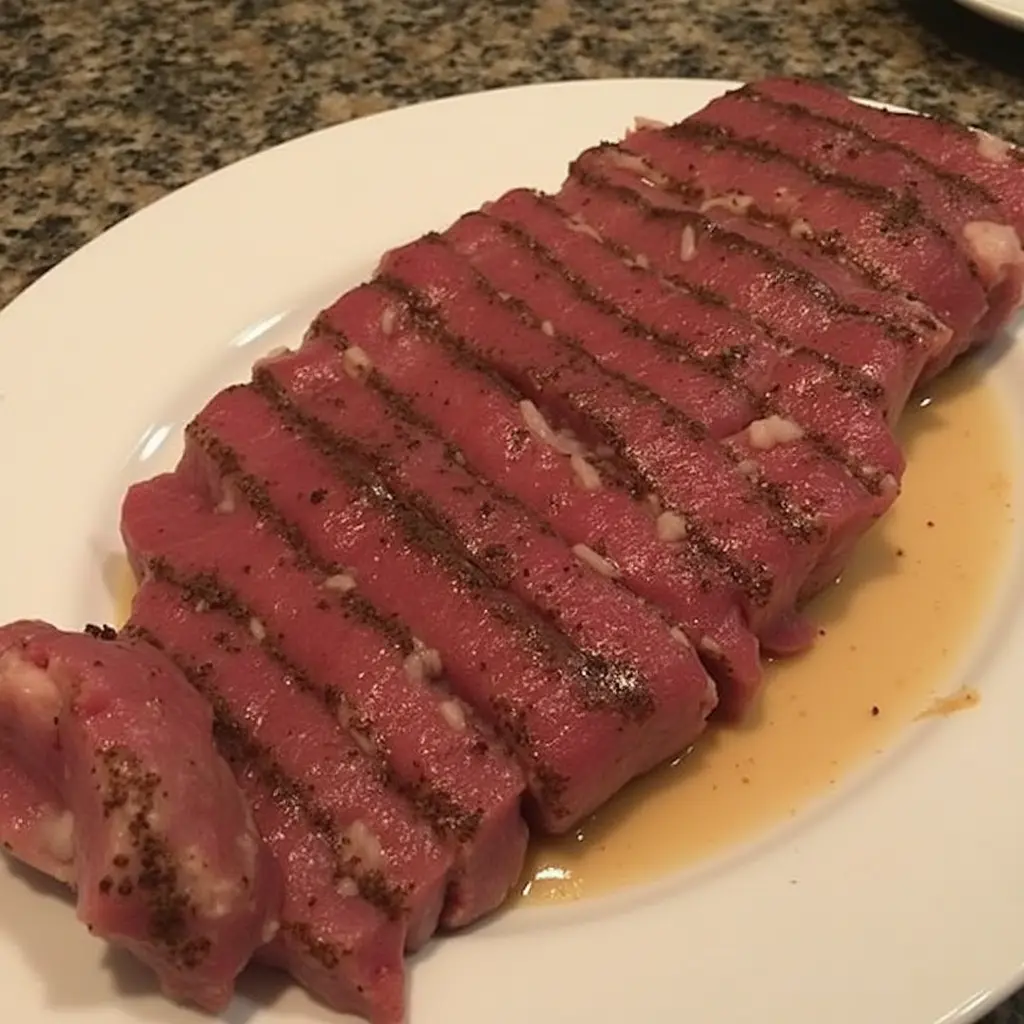Why is flat iron steak so expensive? The first time I watched a butcher expertly extract this cut, I knew it was something special. As a food lover, I realized it’s more than a meal—it’s a unique experience that justifies its price.
Flat iron steak has caught the attention of many food lovers. Its special qualities and detailed preparation make it one of the pricier steaks out there. From the farm to your plate, many factors add to its cost.
Ever wondered why flat iron steak is so pricey? You’re not alone. Learning about its value shows a story of precision, quality, and skill in cooking.

Key Takeaways
- Flat iron steak is a rare and specialized beef cut
- Complex butchering techniques increase its market value
- Limited availability drives up pricing
- High-quality marbling contributes to its premium status
- Specialized cattle farming practices impact cost
Understanding the Origins of Flat Iron Steak
The flat iron steak is a fascinating find in the world of meat. It changed how we see beef cuts. It came from research and new butchering ways, adding a new twist to steak.

Meat scientists at the University of Nebraska and the University of Florida started it all. They looked into the beef shoulder, finding new uses for it.
History of the Cut’s Discovery
In the early 2000s, meat experts found a special cut in the chuck primal section. They found a tender muscle under the shoulder blade that was often ignored. Key moments in the flat iron steak’s story include:
- 2002: Initial identification of the muscle’s potential
- 2004: First commercial marketing of the cut
- 2007: Widespread restaurant and grocery adoption
Anatomical Location on the Cattle
The flat iron steak comes from the beef shoulder, known as the chuck primal. This spot makes it special and gives it a great taste.
| Cut Location | Muscle Group | Characteristics |
|---|---|---|
| Top blade muscle | Infraspinatus muscle | Highly marbled, tender texture |
| Beef shoulder region | Chuck primal | Rich, beefy flavor |
Knowing where the flat iron steak comes from makes its special qualities clear. It’s a mix of science and cooking creativity. It turned a forgotten beef shoulder part into a favorite steak.
The Unique Characteristics of Flat Iron Steak

Flat iron steak is a standout cut of beef. It has caught the eye of meat lovers and chefs. Its special qualities make it a top choice for a great meal.
This steak is incredibly tender. It comes from the cow’s shoulder. Its tenderness is unmatched, even compared to pricier cuts.
- Exceptional marbling throughout the meat
- Rich, robust flavor profile
- Consistently tender texture
- Ideal for grilling and pan-searing
Marbling is key to its quality. The fat spread throughout makes it melt in your mouth. Chefs and home cooks love its texture and how well it takes on flavors.
“The flat iron is a game-changer in beef cuts – delivering restaurant-quality flavor right in your own kitchen.” – Professional Chef Mark Thompson
| Characteristic | Description |
|---|---|
| Texture | Extremely tender and smooth |
| Fat Content | Rich marbling with balanced fat distribution |
| Flavor Intensity | Bold and robust beef flavor |
| Cooking Versatility | Excellent for grilling, pan-searing, and broiling |
When picking a flat iron steak, look for good marbling and a deep red color. This guarantees the best flavor and tenderness. Whether you’re a pro chef or a home cook, this steak offers a top-notch dining experience.
The Complex Butchering Process
Getting the perfect flat iron steak is a detailed and precise process. Meat cutters spend a lot of time and skill to turn a big shoulder clod into this special cut of beef.
Specialized Skills Required for Meat Cutting
Meat cutting needs a lot of training and great knife skills. Butchers must know the cattle’s anatomy well to find and cut out the flat iron steak. They have to:
- Find the muscle grain and tissue structure
- Use exact cutting techniques
- Keep the meat quality consistent
- Reduce muscle damage when separating
Time-Intensive Preparation
The process of making flat iron steak is very time-consuming. Skilled butchers spend a lot of time carefully cutting the steak from the shoulder clod. They aim to waste as little as possible and keep the meat quality high.
“Precision is everything in meat cutting. One wrong move can ruin the whole cut.” – Master Butcher
Waste Reduction Challenges
Butchers face big challenges in cutting down waste during beef processing. They need to carefully cut around the shoulder muscle to get the flat iron steak. They also have to save as much of the surrounding meat as possible.
| Butchering Stage | Time Required | Skill Level |
|---|---|---|
| Muscle Identification | 15-20 minutes | Advanced |
| Precise Cutting | 20-30 minutes | Expert |
| Waste Management | 10-15 minutes | Specialized |
These detailed steps show why flat iron steak is so expensive and requires top-notch craftsmanship in meat cutting.
Why Is Flat Iron Steak So Expensive?
Flat iron steak’s high price comes from many factors. It’s a mix of high demand, special preparation, and limited supply. This cut is a perfect example of how these elements combine.
The cost of flat iron steak is due to several key points:
- Limited meat yield per cattle
- Precise butchering techniques
- High marbling quality
- Increasing culinary popularity
Butchers need a lot of skill to get this cut. Flat iron steak cost reflects the intricate process of carefully separating muscle groups from the shoulder blade. Meat processors spend a lot of time finding and trimming this delicate part.
“The art of creating a perfect flat iron steak requires exceptional precision and expertise.” – Master Butcher Robert Klein
Knowing about this cut makes you appreciate it more. Restaurants and meat markets see the big investment needed to offer this steak. This investment affects its price.
Market trends also affect flat iron steak’s price. As more chefs and home cooks try it, its demand goes up. This demand pushes its price even higher.
Premium Meat Quality and Grading Standards
Exploring USDA beef grades shows why flat iron steak is pricey. The standards for meat quality are complex. They involve detailed checks to decide a steak’s worth.
The USDA grading system is key for judging beef quality. It looks at two main things: maturity and marbling scores.
USDA Grading Breakdown
The USDA sorts beef into several grades:
- Prime: The highest quality with lots of marbling
- Choice: High-quality meat with some marbling
- Select: Leaner cut with little marbling
Marbling Requirements
Marbling scores are vital for a steak’s quality and price. These fat bits in the meat make it rich in flavor and tender. For flat iron steak, more marbling means a higher price.
Quality Indicators
Meat graders check several important things:
- Fat distribution
- Muscle color
- Muscle firmness
- Overall fat covering
“Marbling is the secret language of steak quality,” says renowned meat expert Dr. Ray Venezia.
Supply and Demand Economics
The flat iron steak market is complex, with supply and demand affecting its price. Beef market trends show more people want this cut, making it popular among meat lovers and chefs.
Supply chain factors are key in figuring out flat iron steak’s availability and cost. The limited supply comes from several reasons:
- Specific anatomical location within the cattle
- Specialized butchering techniques required
- Limited yield per individual animal
Recently, demand for flat iron steak has gone up. This has made it a sought-after choice. People love its tenderness and flavor, turning it into a high-end option.
“The rise of flat iron steak represents a fascinating shift in beef consumption patterns” – Culinary Research Institute
Marketing and culinary creativity have made this cut more valuable. Restaurants and meat sellers have raised prices by highlighting its quality.
- Increasing consumer awareness
- Limited production capabilities
- High-quality meat characteristics
Knowing these market forces helps us see why flat iron steak is pricey in today’s beef market.
The Impact of Cattle Farming Costs
Beef production’s economic landscape explains why flat iron steak is pricey. Cattle farming costs are key to meat prices. Ranchers face many financial hurdles that affect livestock and beef costs.
Raising cattle is complex and costly. Ranchers must manage many expenses to stay profitable. This is crucial in a competitive market.
Feed and Maintenance Expenses
Feed is the biggest expense in cattle farming. Beef cattle need special nutrition, which is expensive:
- Grain-based feed can cost $300-$500 per head annually
- Pasture maintenance requires significant land investment
- Supplemental nutrition adds additional expenses
Labor and Equipment Costs
Livestock management costs more than just feed. Ranchers have to pay for many ongoing expenses:
| Expense Category | Average Annual Cost |
|---|---|
| Labor | $50,000 – $75,000 |
| Equipment | $25,000 – $100,000 |
| Veterinary Care | $15,000 – $30,000 |
“Efficient cattle farming is a delicate balance between investment and return” – Agricultural Economics Research Institute
These costs show why beef prices keep going up. Every part of cattle farming adds to the meat price you see.
Restaurant Markup and Pricing Strategy
Understanding restaurant steak prices is complex. It involves looking into the menu pricing strategy. When you order a flat iron steak at a fine dining place, the price is more than just the meat’s cost.
Restaurants set their prices by considering many factors:
- Raw ingredient costs
- Labor expenses for preparation
- Kitchen overhead
- Culinary expertise
- Restaurant’s market positioning
Fine dining costs are higher because of the specialized skills needed. Chefs spend a lot of time selecting, aging, and preparing the meat. This ensures the meat is of the highest quality.
“The art of pricing is about creating value perception, not just covering costs.” – Professional Chef
Most restaurants aim for a markup of 300-400% on protein dishes. For a flat iron steak, this could make a $10 cut into a $40-$50 menu item. This strategy includes:
- Premium ingredient selection
- Sophisticated cooking techniques
- Elegant plating
- Overall dining experience
Your dining experience is more than just the food. It’s about the ambiance, service, and culinary craftsmanship. These elements justify the restaurant steak prices you see.
Comparing Flat Iron to Other Premium Cuts
The flat iron steak is a standout in the world of premium steaks. It’s important to know how it compares to other top cuts. This knowledge helps you choose the best steak for your meals and purchases.
Flat iron steak is loved for its unique taste and texture. Chefs and steak lovers find it different from other high-quality steaks. This makes it a favorite among many.
Price Point Analysis
Let’s look at the prices of different premium steaks:
| Steak Cut | Average Price per Pound | Tenderness Rating |
|---|---|---|
| Flat Iron | $12-$15 | 8/10 |
| Ribeye | $18-$22 | 9/10 |
| New York Strip | $15-$19 | 7/10 |
| Filet Mignon | $25-$30 | 10/10 |
Flavor and Texture Comparison
Flat iron steak is known for its great taste and softness. Here are its main features:
- Rich, beefy flavor like chuck cuts
- Softer than regular chuck steaks
- Good marbling for juicy meat
“The flat iron represents an exceptional value in premium steak cuts, delivering restaurant-quality taste at a more accessible price point.” – Chef Michael Roberts
Even though it’s cheaper than ribeye or filet mignon, the flat iron steak is a great choice. It offers a mix of flavor, tenderness, and value.
Tips for Purchasing and Value Assessment
When buying flat iron steak, smart consumers look beyond the price. They focus on finding the best beef cut that fits their budget and taste. This is where your steak value tips begin.
- Inspect the marbling – look for consistent white fat streaks throughout the meat
- Check the color – fresh flat iron steak should be bright red with minimal brown edges
- Verify the packaging date to ensure maximum freshness
- Ask your butcher about the specific cattle source and grade
Buying flat iron steak needs careful thought. Butchers suggest choosing USDA Choice or Prime grades for the best taste and tenderness. Prices vary, but expect to spend $10-$15 per pound for top cuts.
“Quality meat is an investment in your dining experience” – Professional Butcher’s Guide
Shopping around can help you find great deals. Local butcher shops usually offer better cuts than big grocery stores. Buying more and freezing it can also save you money.
- Compare prices across different retailers
- Look for seasonal promotions
- Buy in bulk when possible to reduce per-pound costs
By following these tips, you’ll become a smart buyer of flat iron steak. You’ll know exactly what to look for in premium beef.
Conclusion
Your journey into the world of flat iron steak shows why it’s so pricey. The cost comes from special butchering, high quality standards, and it’s hard to find. Each slice’s taste is a result of a detailed process.
Flat iron steak is special because of its marbling and where it comes from. Butchers work hard to make sure it tastes great and is tender. This makes it a top choice for food lovers.
The cost of beef is more than just money. It includes the cost of raising cattle, strict USDA grades, and butchering skills. Knowing this makes you see flat iron steak as a unique treat.
Flat iron steak is a symbol of fine cooking. Whether you cook at home or in a restaurant, understanding its value makes your meals better. It’s a cut that’s worth the extra cost.

